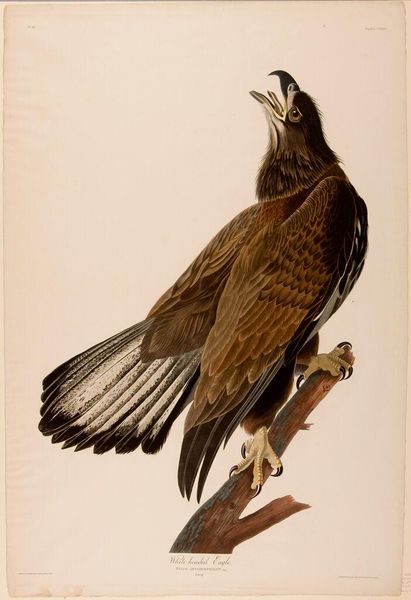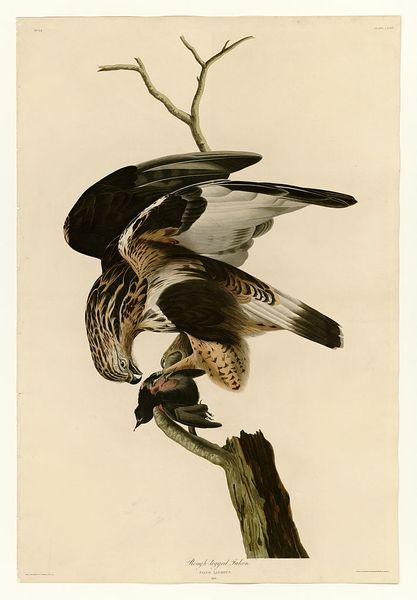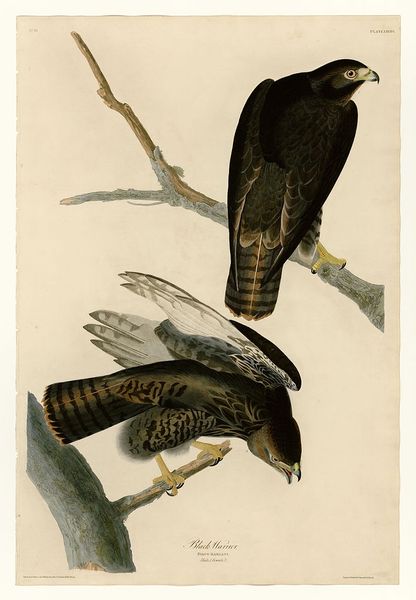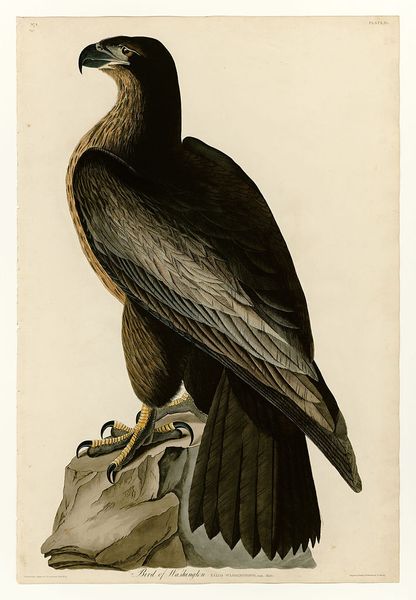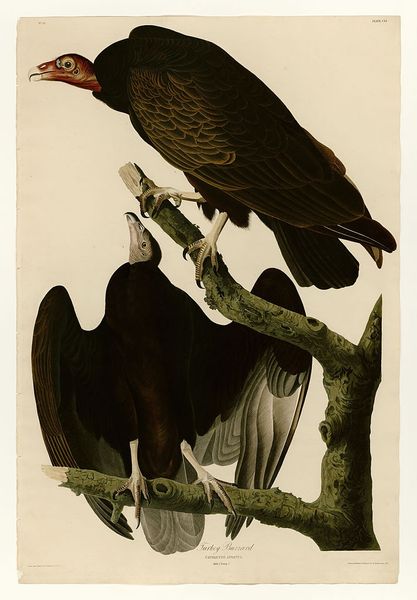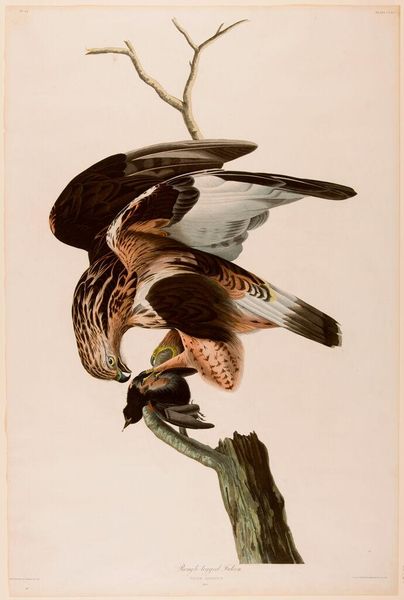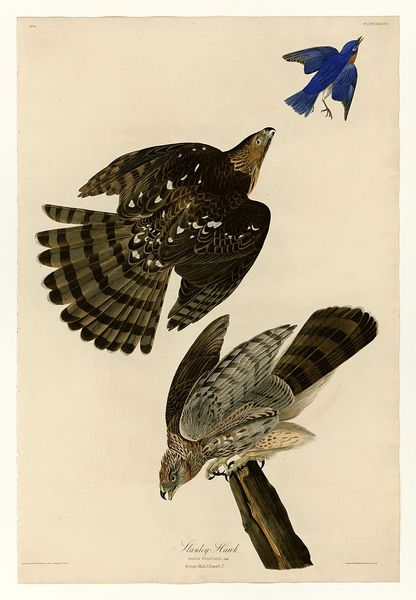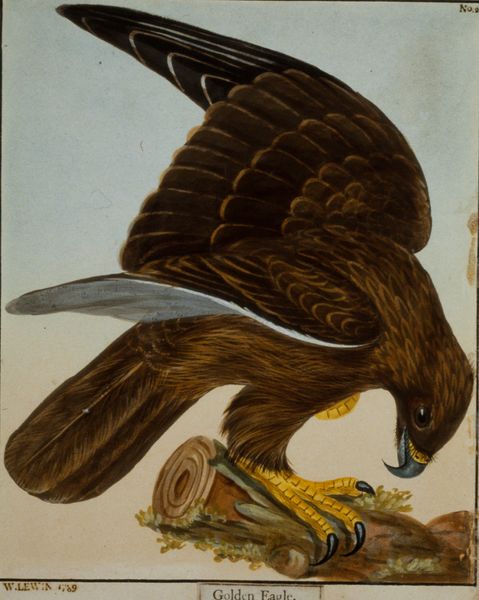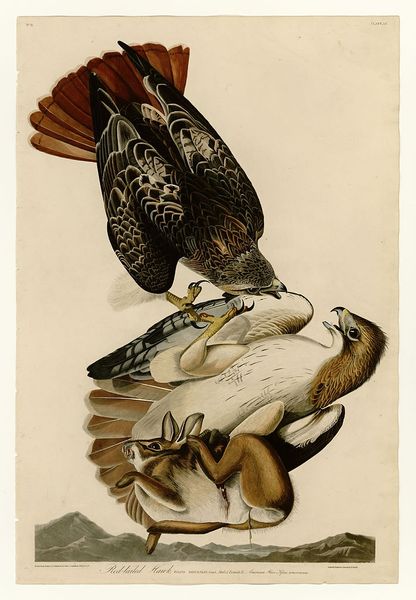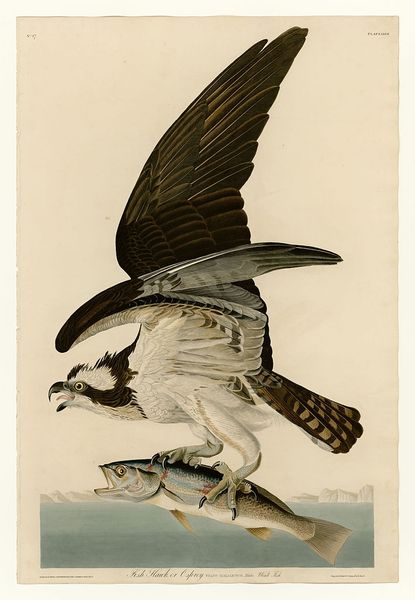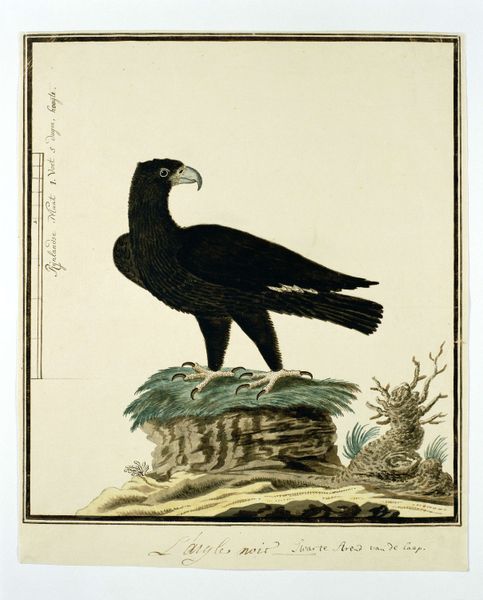
painting, watercolor
#
fine art illustration
#
animal
#
painting
#
landscape
#
bird
#
watercolor
#
romanticism
#
watercolour illustration
#
realism
Copyright: Public domain
Curator: Let’s discuss "Plate 126, White-headed Eagle" attributed to John James Audubon, a watercolor painting rendered in the style of realist and romanticist landscape, it is quite an imposing image! Editor: Striking indeed. The upward gaze and slightly opened beak immediately suggest a primal scream or call, imbuing the bird with a sense of urgency and untamed power. The diagonal perch also enhances the feeling of motion. Curator: Fascinating; let's consider the printmaking process and materials involved here. Audubon’s work, including this striking portrayal of the eagle, heavily relies on both watercolor techniques and the reproductive technologies of engraving and aquatint to reach a broad audience. These mass-produced prints facilitated wider access and influenced public sentiment and consumption of imagery surrounding natural history and, ultimately, the environment. Editor: And how those images spoke to that audience! The eagle is a potent symbol, holding connotations of freedom, power, and American identity, amplified by its deliberate composition and detail in replicating plumage. Its very presence on the page is an assertion of national character. Curator: Quite right, and this ties directly to material availability and Audubon’s own journey. He didn't just pick up supplies; he secured patronage. Wealthy Europeans acquired his volumes, thus becoming consumers in the enterprise, and that affected distribution and consumption patterns back in the States. Editor: Returning to the bird itself, note the way the sharp talons clutch the branch. Audubon captures both vulnerability and ferocity within the same frame; it feels as much portrait as scientific observation, don't you think? A rendering steeped in cultural anxieties as much as artistic representation. Curator: A very interesting viewpoint! I think looking into the availability and distribution channels reveals fascinating stories about the work’s creation, transmission, and the shaping of a distinctly American visual culture rooted in its material production, markets, and patronage. Editor: Exactly. For me, it resonates on a mythic level. It echoes and amplifies symbolic languages related to identity, and collective dreams woven into the very fabric of what America represented, then and now.
Comments
No comments
Be the first to comment and join the conversation on the ultimate creative platform.
